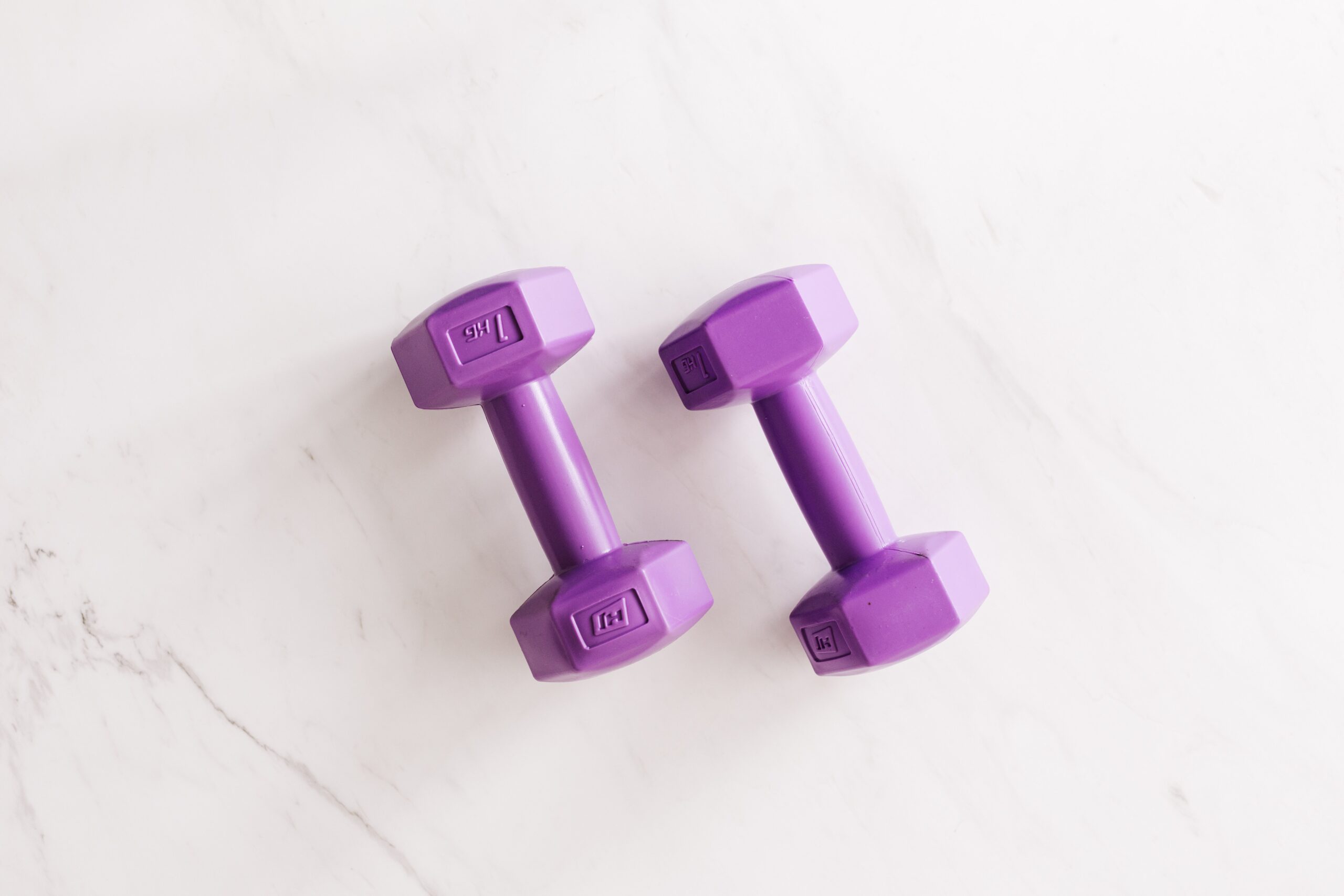Do you want to become more physically fit and get a more toned body? Many individuals think that the only method to gain strength and muscle mass is to lift big objects. However, using modest weights as part of your exercise regimen has many advantages. In this post, we’ll look at the main advantages of using Major Benefits of Lifting Light Weights for exercise and why you shouldn’t disregard them.
The Power of Light Weights:

When it comes to weightlifting, many people associate progress with heavy weights and intense workouts. However, lifting light weights can be just as effective, if not more so, depending on your fitness goals. Lightweight training involves using weights that are typically between 40% to 60% of your maximum lifting capacity.
Improved Muscular Endurance:

Improving muscular endurance involves a combination of targeted training, proper nutrition, and recovery strategies. Here’s a step-by-step guide on how to enhance your muscular endurance:
Incorporate Resistance Training:
- Engage in resistance or weight training exercises regularly. Use lighter weights or resistance bands for higher repetitions and sets.
Progressive Overload:
- Gradually increase the resistance or weight you use over time to challenge your muscles. This progression should be gradual to avoid overexertion.
High Repetitions and Sets:
- Perform exercises with a higher number of repetitions (typically 12-20 reps per set) to target muscular endurance.
Compound Movements:
- Include compound exercises like squats, lunges, deadlifts, and bench presses in your routine. These engage multiple muscle groups simultaneously, improving overall endurance.
Cardiovascular Training:
- Incorporate aerobic exercises such as running, cycling, or swimming into your fitness regimen. Cardiovascular training enhances overall endurance and complements strength training.
Interval Training:
- Integrate interval training into your cardio workouts. Alternating between high-intensity bursts and low-intensity recovery periods can improve endurance.
Proper Nutrition:
- Ensure you’re consuming a balanced diet with an adequate intake of carbohydrates, proteins, and fats. Carbohydrates provide energy for endurance activities.
Hydration:
- Stay well-hydrated before, during, and after workouts. Dehydration can lead to premature fatigue.
Rest and Recovery:
- Allow your muscles to recover between workouts. Overtraining can hinder progress. Aim for 48 hours of rest between targeting the same muscle groups.
Stretching and Flexibility:
- Incorporate stretching exercises to improve flexibility. Flexible muscles are less prone to fatigue and injury.
Proper Form:
- Maintain proper form during exercises to avoid unnecessary strain and injury.
Quality Sleep:
- Ensure you get sufficient restorative sleep, as this is when your body repairs and builds muscles.
Supplementation:
- Consider talking to a healthcare professional or nutritionist about supplements like creatine or beta-alanine, which can enhance endurance.
Track Progress:
- Keep a workout journal to monitor your progress. Record the number of repetitions, sets, and weights used to track improvements.
Periodization:
- Implement periodization in your training program, which involves cycling through different phases of training intensity to prevent plateaus and continuously challenge your muscles.
Consult a Fitness Professional:
- If you’re new to training or want a customized plan, consult a fitness trainer or coach who can design a program tailored to your specific goals and needs.
Remember that improving muscular endurance takes time and consistency. Be patient with your progress and make adjustments to your routine as needed to continue challenging your muscles and making gains in endurance.
Enhanced Definition and Tone:

To enhance muscle definition and tone, it’s essential to focus on a combination of targeted strength training, cardiovascular exercise, proper nutrition, and recovery strategies. Here’s a detailed guide on how to achieve enhanced muscle definition and tone:
Strength Training:
- Engage in resistance training at least 3-4 times a week. Focus on compound exercises like squats, deadlifts, bench presses, pull-ups, and rows. These exercises work multiple muscle groups simultaneously, promoting overall muscle development.
High Repetitions and Sets:
- Incorporate moderate to high repetitions (typically 8-15 reps per set) in your strength training routine. This rep range is effective for building muscle endurance while promoting definition.
Progressive Overload:
- Gradually increase the weight or resistance you lift over time to continually challenge your muscles. This progressive overload is key to building muscle definition and tone.
Isolation Exercises:
- Include isolation exercises that target specific muscle groups, such as bicep curls, tricep extensions, and calf raises, to focus on individual muscle definition.
Focus on Form:
- Maintain proper form during every exercise to ensure you’re effectively targeting the intended muscles and preventing injury.
Cardiovascular Exercise:
- Incorporate regular cardiovascular workouts like running, cycling, or swimming. Cardio helps reduce body fat, revealing muscle definition beneath.
Interval Training:
- Integrate high-intensity interval training (HIIT) into your cardio routine. HIIT alternates between intense bursts of exercise and short rest periods, which can boost fat loss and muscle definition.
Nutrition:
- Consume a balanced diet rich in lean proteins, complex carbohydrates, healthy fats, and plenty of vegetables. Protein is essential for muscle repair and growth.
Caloric Control:
- Monitor your calorie intake to maintain a slight caloric deficit if you’re aiming to reduce body fat while preserving muscle. A registered dietitian can help you create a suitable nutrition plan.
Hydration:
- Stay well-hydrated, as dehydration can affect muscle tone and overall performance.
Adequate Rest and Recovery:
- Ensure you get enough sleep to allow your muscles to recover and repair. Aim for 7-9 hours of quality sleep per night.
Stretching and Mobility Work:
- Include stretching and mobility exercises in your routine to prevent muscle imbalances and maintain flexibility.
Supplements:
- Consider supplements like protein powder, branched-chain amino acids (BCAAs), or creatine, but consult a healthcare professional or nutritionist before adding them to your regimen.
Consistency:
- Consistency is key. Stick to your workout and nutrition plan over the long term to see lasting results.
Consult a Fitness Professional:
- If you’re unsure about your fitness goals or need personalized guidance, consult a fitness trainer or coach who can create a tailored plan for you.
Achieving enhanced muscle definition and tone requires dedication, patience, and a comprehensive approach that combines strength training, cardio, nutrition, and recovery practices. It’s essential to set realistic goals and stay committed to your fitness journey for lasting results.
Increased Metabolic Rate:

Increasing your metabolic rate can support weight management and overall health. Here are several strategies to boost your metabolic rate:
Strength Training:
- Incorporate resistance training into your fitness routine. Building lean muscle mass through strength training increases your resting metabolic rate because muscles burn more calories at rest than fat. Aim for at least two to three sessions per week.
High-Intensity Interval Training (HIIT):
- HIIT workouts involve short bursts of intense exercise followed by brief rest periods. These workouts are effective at boosting metabolism and burning calories both during and after the workout.
Cardiovascular Exercise:
- Engage in regular cardiovascular activities such as running, cycling, or swimming. These activities increase calorie expenditure and elevate your metabolic rate while you’re active.
Stay Active Throughout the Day:
- Incorporate more physical activity into your daily routine. Take the stairs, walk or bike instead of driving short distances, and stand up or move around at work if possible.
Eat Enough Protein:
- Include an adequate amount of protein in your diet. Protein requires more energy to digest than carbohydrates or fats, which can temporarily increase your metabolic rate through a process called the thermic effect of food (TEF).
Eat Regularly:
Consume regular, balanced meals and snacks throughout the day. Skipping meals or going too long without eating can slow down your metabolism as your body enters a conservation mode.
Drink Water:
- Staying hydrated is essential for metabolic processes. Drinking enough water helps your body efficiently burn calories. Some studies suggest that drinking cold water may temporarily boost metabolism because your body has to work to warm it up to body temperature.
Get Enough Sleep:
- Ensure you get sufficient, high-quality sleep. Sleep deprivation can negatively impact metabolism and hormonal balance.
Manage Stress:
- Chronic stress can affect hormone levels, including cortisol, which can lead to weight gain and a slower metabolism. Incorporate stress management techniques like mindfulness, meditation, or yoga into your routine.
Increase NEAT:
- Non-Exercise Activity Thermogenesis (NEAT) refers to the calories burned through activities like walking, fidgeting, and standing. Increasing NEAT can significantly contribute to calorie expenditure.
Consider Supplements:
- Some supplements, like green tea extract and caffeine, may have a temporary effect on metabolism. However, consult with a healthcare professional before using supplements for this purpose.
Maintain a Healthy Body Composition:
- A higher percentage of muscle mass compared to fat can result in a higher metabolic rate. Strength training and maintaining a healthy body composition can help achieve this.
Consult a Healthcare Professional:
- If you have concerns about your metabolism or weight management, consider consulting a registered dietitian, nutritionist, or healthcare provider for personalized guidance.
It’s important to note that genetics, age, and other factors can influence your metabolic rate. While you can take steps to increase it, a healthy lifestyle that includes regular physical activity and a balanced diet is essential for long-term metabolic health.
Minimise the Risk of Injury:

When it comes to exercise and strength training, reducing the risk of injury is a primary concern. Heavy weightlifting can place a significant strain on your joints and muscles, which can lead to a higher risk of injuries, particularly when proper form and technique are not adhered to.
In contrast, choosing to lift lighter weights offers a valuable advantage in terms of injury prevention. The reason behind this lies in the manageable loads involved. When lifting lighter weights, you have the opportunity to prioritize and focus on maintaining impeccable form and executing exercises correctly. This heightened attention to form minimizes the chances of accidents or muscle strains.
In essence, opting for lighter weights not only allows you to gradually build strength and endurance but also significantly reduces the risk of workout-related injuries. It provides a safer and more controlled environment for your fitness journey, ensuring that you can enjoy the benefits of exercise without the added worry of potential harm. So, in the quest for a healthier and fitter you, the choice of lighter weights can be a pivotal step toward safeguarding your well-being.
Enhanced Recovery and Rehabilitation:

In the realm of fitness and well-being, the concept of enhanced recovery and rehabilitation is of paramount importance. Whether you’re recuperating from an injury or seeking to regain your physical prowess, lightweight training emerges as a valuable ally in your journey.
The controlled nature of lifting lighter weights sets the stage for targeted movements that can work wonders in strengthening weakened muscles and expediting the recovery process. For those on the path to rehabilitation, this controlled approach offers a gentle yet effective means to rebuild lost strength and mobility. It allows individuals to progressively regain their physical capabilities without undue strain or risk of exacerbating their condition.
Moreover, lightweight training serves as a bridge back to fitness for those who have experienced a period of inactivity. It provides a welcoming and less intimidating starting point, allowing individuals to ease into exercise without overwhelming their bodies. This gradual reintroduction to physical activity can be particularly beneficial for both physical and mental well-being.
In summary, lightweight training is not just about building strength; it’s also about rebuilding, recovering, and restoring. It promotes a sense of control and empowerment during times of physical rehabilitation, helping individuals regain their confidence and vitality. So, whether you’re recovering from an injury or simply looking to regain your fitness footing, lightweight training can be a gentle yet effective stepping stone on your path to wellness.
Convenience and Accessibility:

In the pursuit of a healthier and more active lifestyle, convenience and accessibility play pivotal roles. It’s often said that the best workout routine is the one you can stick to, and when it comes to lifting lighter weights, these factors come into sharp focus.
Unlike their heavyweight counterparts, which often demand specialized equipment and dedicated training spaces, lightweight training offers a world of convenience. The simplicity of this approach means you can engage in effective workouts with minimal equipment, often right in the comfort of your own home. This accessibility eliminates the need for time-consuming trips to the gym, making it easier to weave exercise into your daily routine.
The beauty of lifting lighter weights lies in its versatility. It’s an exercise method that doesn’t require a major commitment of time or resources. Whether you have a packed schedule or are simply looking for a practical way to stay active, lightweight training provides an accessible and adaptable solution.
Moreover, this accessibility extends beyond physical convenience. It can also be a psychological boost. Knowing that you can engage in a workout without the need for elaborate setups or extensive planning can be a powerful motivator. It removes barriers that might otherwise hinder your commitment to a healthier lifestyle.
In essence, lifting lighter weights empowers you with a convenient and accessible means of staying active and fit. It’s an approach that encourages consistency and can seamlessly integrate into the fabric of your daily life, making it easier than ever to prioritize your well-being. So, whether you’re a busy professional or someone looking for a practical fitness solution, the world of lightweight training welcomes you with open arms.
Psychological Benefits:

While the physical advantages of exercise are well-documented, it’s equally important to acknowledge the profound psychological benefits that come with lifting lighter weights. Engaging in such workouts extends beyond the realm of the physical, offering a host of positive impacts on your mental well-being.
Endorphin Release:
- Exercise, including lightweight training, triggers the release of endorphins, often referred to as “feel-good” hormones. These natural mood enhancers can uplift your spirits and provide a sense of overall well-being.
Sense of Achievement:
- As you gradually increase your strength and endurance through lightweight training, it instills a powerful sense of accomplishment. Setting and achieving fitness goals, no matter how small, boosts self-esteem and confidence.
Stress Reduction:
- Exercise is a potent stress reliever. Lifting lighter weights provides an opportunity to decompress from the pressures of daily life, allowing you to clear your mind and regain focus.
Improved Self-Image:
- Consistent lightweight training can lead to positive changes in your body composition and overall physique. This can enhance your self-image and body confidence, promoting a more positive self-concept.
Boosted Motivation:
- Success in lightweight training can spill over into other areas of your life, fostering a sense of discipline and motivation. Achieving fitness goals can inspire you to tackle other challenges with greater determination.
Social Connection:
- Engaging in fitness activities, whether alone or in a group setting, offers opportunities for social interaction and connection. This can combat feelings of isolation and promote a sense of belonging.
Mental Resilience:
- Overcoming physical challenges in your workouts can build mental resilience. It teaches you to persevere in the face of obstacles, which can be applied to various aspects of life.
Enhanced Mood:
- Regular exercise, such as lightweight training, has been shown to alleviate symptoms of depression and anxiety. It can be an integral part of a holistic approach to mental health.
In essence, lifting lighter weights is not just about physical transformation; it’s about nurturing your mental well-being as well. It provides a holistic approach to health, promoting a positive outlook on life, and helping you navigate the demands of everyday living with a greater sense of vitality and resilience. So, as you embark on your fitness journey, remember that the psychological benefits of lightweight training can be just as transformative as the physical ones.
Conclusion
In conclusion, lifting light weights to lift offers several advantages that you should not ignore in your quest for fitness. Lightweight training can help you reach your goals, whether they are to increase your metabolism, reduce the chance of injury, improve muscular endurance, or develop a well-defined body. Furthermore, it adds value to any workout plan thanks to its accessibility, simplicity, and psychological advantages. Don’t undervalue the benefits of lifting modest weights, and start enjoying them right away!
FAQs (Frequently Asked Questions)
Can lifting light weights help me build muscle mass?
- While lifting light weights may not result in significant muscle mass gain, it can help define and tone your muscles, giving you a more sculpted appearance.
How often should I incorporate lightweight training into my workout routine?
- It is recommended to incorporate lightweight training into your routine at least two to three times a week for optimal results.
Can lifting light weights help with weight loss?
- Yes, lifting light weights can contribute to weight loss by increasing your metabolic rate and promoting calorie burn.
Do I need any special equipment for lightweight training?
- Lightweight training can be done with minimal equipment such as dumbbells or resistance bands, making it accessible to most individuals.
Can lifting light weights replace heavy weightlifting?
- Lifting light weights can complement heavy weightlifting, but it may not completely replace it if your goal is to focus on maximum strength and muscle gain.
Lifting Light Weights Lifting Light Weights Lifting Light Weights Lifting Light Weights Lifting Light Weights Lifting Light Weights Lifting Light Weights Lifting Light Weights Lifting Light Weights Lifting Light Weights Lifting Light Weights Lifting Light Weights Lifting Light Weights Lifting Light Weights Lifting Light Weights Lifting Light Weights


